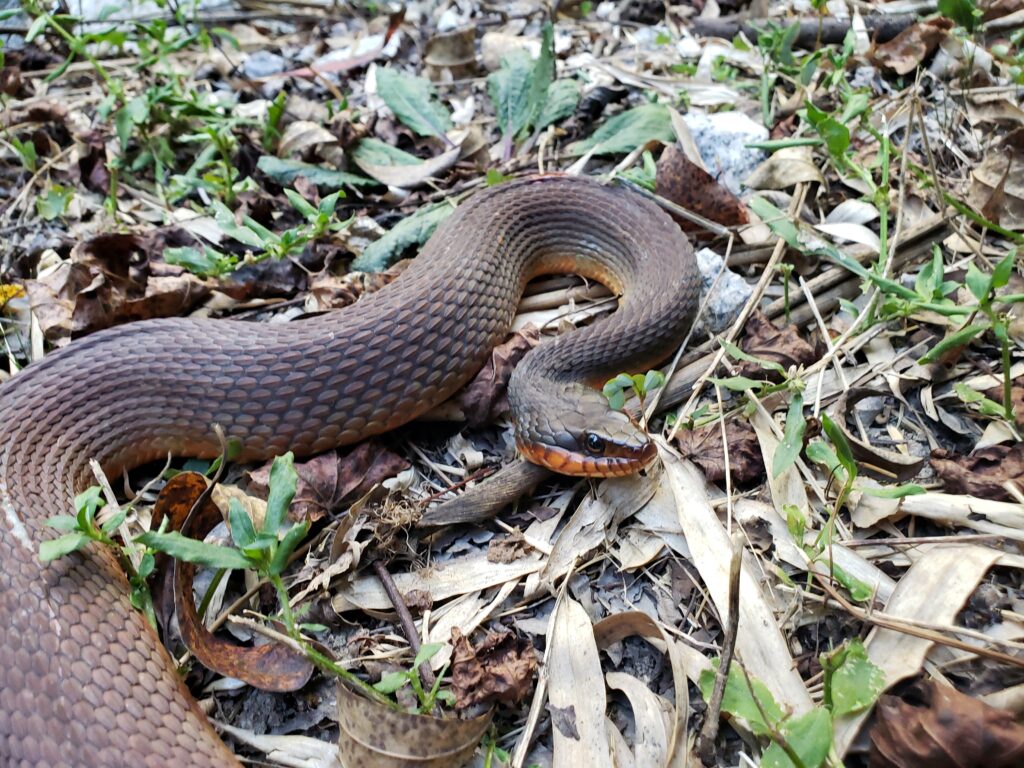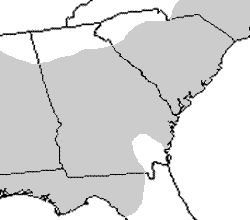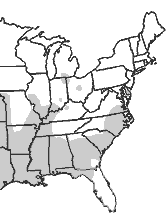Red-bellied Watersnake (Nerodia erythrogaster)
Red-bellied Watersnake (Nerodia erythrogaster)



Description: A relatively large semi-aquatic snake, usually 76–122 cm (30–48 in) long. Adults are typically dark brown, gray, or light brown with a distinctive un-patterned underside that is bright orange to yellow. Juveniles are pinkish to light brown with alternating dark blotches on the back and sides, resembling Northern (N. sipedon) and Banded Watersnakes (N. fasciata), but differentiated by their plain belly. Juvenile patterns fade with age, and adults appear more uniformly colored. Females are larger but have proportionally shorter tails. Scales are keeled, and the anal plate is divided.
Range and Habitat: Occurs throughout the Southeast Coastal Plain and lower Piedmont, absent from the Appalachian Mountains and peninsular Florida. Found across most of South Carolina and Georgia, except extreme southeastern Georgia. Prefers aquatic habitats such as rivers, lakes, creeks, wetlands, and swamps. Frequently seen basking near water on logs, branches, or shorelines.
Habits: Feeds primarily on amphibians, especially frogs, but also consumes fish. Strongly associated with temporary wetlands, which provide rich amphibian prey during breeding seasons. More terrestrial than most regional watersnakes, often observed moving across land or crossing roads during rainy summer nights. When threatened, they typically flee onto land rather than into water. Commonly basks on logs, stumps, and snags in rivers or cypress swamps.
Conservation Status: Considered common and widespread, with no major conservation concerns in most of its range. Protected by law in Georgia. Reliance on amphibian prey and temporary wetlands makes this species potentially vulnerable to habitat loss and wetland destruction.


